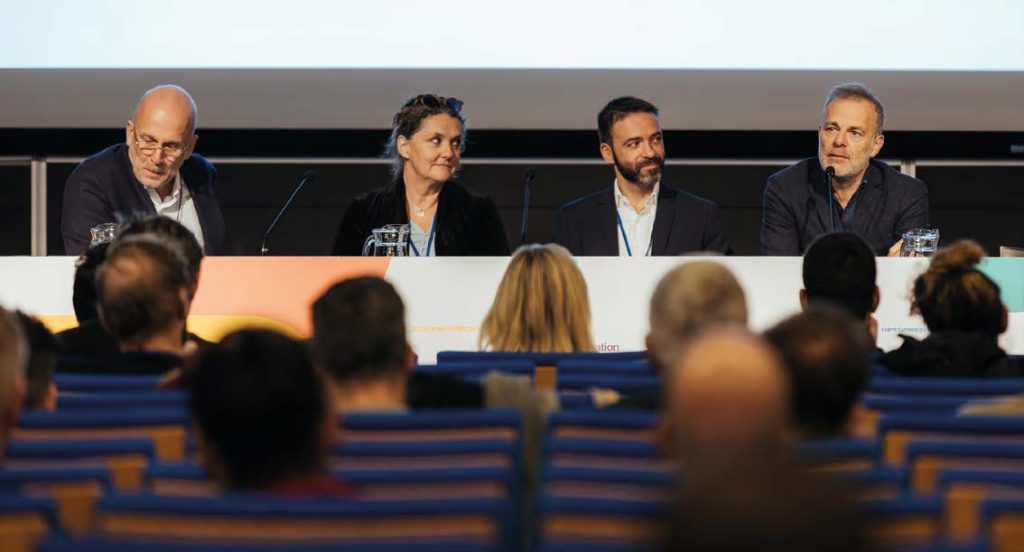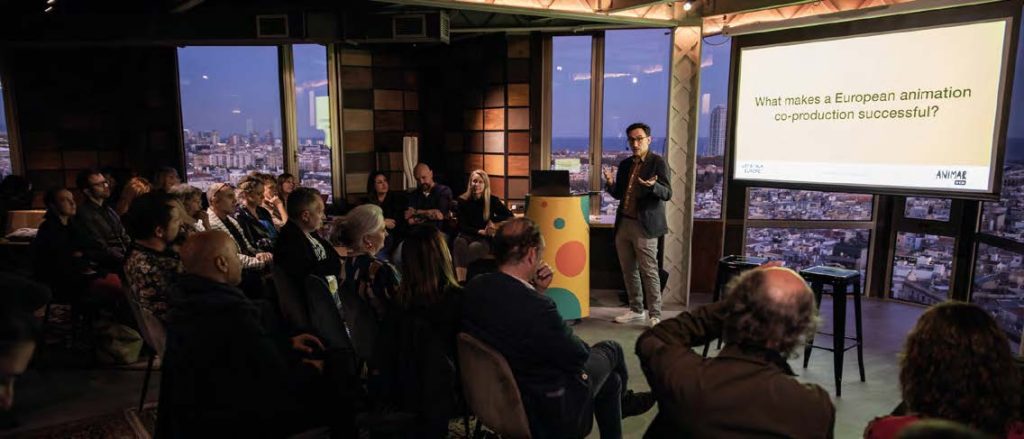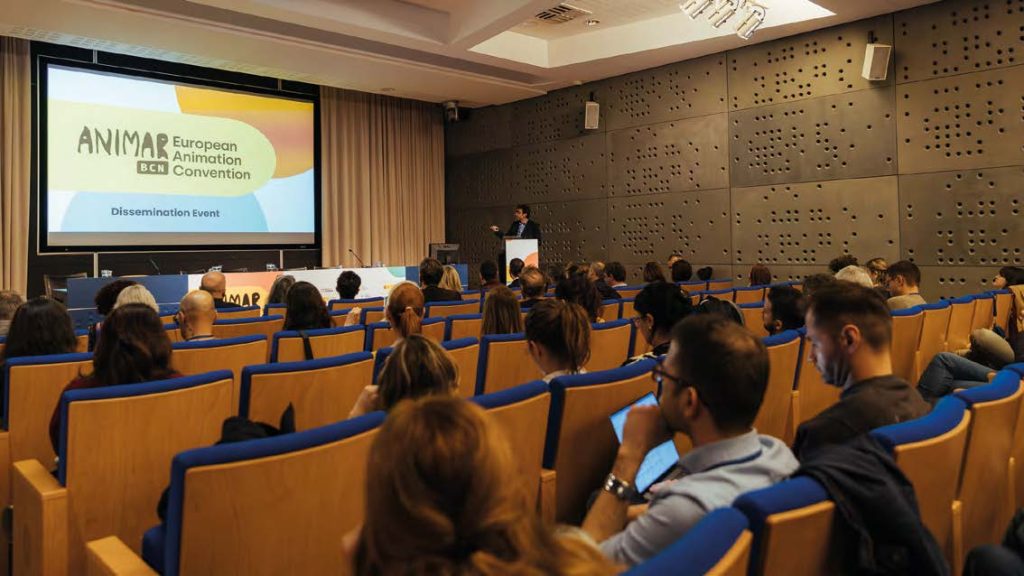The current legal framework defines as “European” animation products created within EU member states or countries part of the Council of Europe’s Convention on Transfrontier Television, provided that they respect some conditions. These projects must be produced, supervised, controlled, and mainly funded by producers and co-producers established in one of these countries, without any control by foreign entities.
Moreover, the term “European” refers in this context to works co-produced under agreements, establishing specific criteria to be respected, between the EU and third countries. This definition includes non-European content, qualifying for EU animation protection measures without adhering to the same production and IP retention obligations that EU members face.
During a meeting held in Cannes with Giuseppe Abbamonte, Director of Media Regulation at the European Commission, Philippe Alessandri, Animation in Europe Chairman, advocated for a more precise definition of “European Works” within the Audiovisual Media Services Directive (AVMSD), defining the regulatory framework for audiovisual content.
In the person of Alessandri, the Animation in Europe board proposed that this definition should be limited to EU countries and aim to promote IP retention in Europe. Ultimately, a European audiovisual work should be created within EU member states or countries part of the Council of Europe’s Convention on Transfrontier Television that apply equal investment and exhibition obligations, with proven IP rights retention in Europe.
Starting from this, let’s delve more into what the current European and national legal frameworks – playing a key role in sustaining the financial backbone of the animation sector in a market increasingly dominated by global players – intend when referring to exhibition obligations.
Legal Frameworks for Audiovisual Media Services
European legislation sets out obligations and rights that regulate how production is funded, distributed, and protected across the EU. Key regulations include quota obligations in the AVMSD, requiring a significant portion of European works to be on broadcasters and on-demand platforms. However, because of the highlighted gaps in the definition of “European work”, also applying to non-European-controlled content, the original intent of protection policies is highly diluted.

Moreover, member states can impose investment obligations on broadcasters and on-demand platforms to dedicate a share of their revenues to the production of European content. This optional nature leads to uneven support across member states. Opposition emerged, with Netflix filing an appeal in the Belgian Constitutional Court against the investment obligation and additional appeals from Google, Meta, and TikTok against the mandatory contribution to audiovisual funding in Flanders.
Platforms like YouTube and TikTok are excluded from the mentioned obligations because they don’t exercise editorial control over content. However, this distinction is increasingly questionable, as their algorithms effectively curate content, indirectly performing an editorial role even if lacking formal editorial responsibility.
A reinforcement of investment obligations – becoming mandatory rather than optional and with clear guidelines to prevent legal ambiguity – and their extension to all services providing access to audiovisual content could mark a necessary shift toward greater accountability and coherence in media regulation across the EU.
The ongoing debate includes the Geo-blocking Regulation. While generally prohibiting discrimination based on nationality within the EU’s internal market, it preserves the territorial licensing model of audiovisual works, essential to financing animation through pre-sales and regional deals. In the context of the scheduled 2025 review of the European geo-blocking regulation, policymakers could consider implementing flexible licensing models that allow for broader content accessibility while respecting territorial rights. Introducing a system that encourages cross-border distribution agreements could enhance access to content without undermining existing financing mechanisms.
Transparency and Author Remuneration
The EU regulatory landscape includes measures to ensure that authors and artists contributing to productions are paid fairly and receive regular information regarding the exploitation of their work and performances, driving more transparency from the producers. However, these measures face significant challenges, as producers may not always have access to detailed exploitation data.
With the rise of digital streaming, the issue is even more evident, as many producers struggle to obtain crucial data from streaming platforms and face a disadvantage in negotiating fair remuneration, meeting legal requirements, and understanding audience preferences. Standardized reporting practices could facilitate better decision-making for all parties involved, marking a pivotal step towards comprehensive media regulation, including digital platforms.
Co-Production in European Animation
Co-production has emerged as a crucial strategy for financing and creating animated works across Europe. As the animation industry faces rising costs and increased competition, this collaborative model allows producers to harness a wealth of funding opportunities, skills, and creativity from multiple nations, enabling the designation of a co-produced project as “national” within each contributing country.
Despite these benefits, the environment for co-production financing is often fragmented, with significant variations in co-production systems across EU member states – creating barriers to effective collaboration and complicating the ability to secure funding and navigate regulatory environments.
As for public funding schemes, they are usually either automatic or selective, leading to disparities in the accessibility of resources for producers working on minority co-productions. A comprehensive framework of different funding schemes could be key to encouraging co-productions. Minority co-production schemes are vital to secure funding for lower-capacity countries. Selective schemes and direct grants should focus on companies that maintain both European IP ownership and thematic relevance to European audiences. Aligned automatic schemes and tax incentives should favour IP retention and co-productions rooted in Europe.
Additionally, the high costs of animation projects make it difficult for many creators to secure sufficient funding. A 50% cap on public financing further limits available support. By reclassifying content aimed at children and youth as “difficult work”, the industry can bypass this cap and access increased state aid.
During a discussion event hosted by the European Commission at Berlinale 2025, focusing on the media consumption habits of young people, Dirk Beinhold, Vice Chairman of Animation in Europe, advocated for the implementation of sub-quotas for children’s and youth content. Audiovisual media services should be required to include 30% European works in their catalogues, aiming to better serve our diverse European demographic and cultivate future audiences.

Public broadcasters also play a key role in development, lending projects credibility and often facilitating access to public funding. However, coordinating multiple broadcasters in joint initiatives, as the European Broadcasting Union, can be difficult due to divergent editorial priorities. One solution could be a standardized tool for broadcasters to formally express their interests, enabling funding bodies to identify market-validated projects and form partnerships around shared goals.
Recent Achievements and Open Issues
In the past year, promising developments in the animation sector have occurred, including the European Broadcasting Union’s co-development initiative and modifications to European-level funding rules. A striking example is Eurimages, now accepting partial storyboards, or the pilot programme for series co-productions of the Council of Europe, allowing more flexibility in animation formats regarding runtime and structure. Both improvements followed the requests of the Federation of Animation Producers.
However, challenges persist. The 2017 revision of the Council of Europe’s Convention on Cinematographic Co-productions introduced broader eligibility criteria and allowed contributions from non-member states. However, France and Germany’s lack of ratification delays the full implementation of the Convention, resulting in a fragmented legal framework. Strengthening the Convention is crucial for fostering equitable partnerships among co-producing countries.
In parallel, a new Council of Europe Convention is being developed for drama, documentary and animation series, aiming to create a new legal status for international co-productions and simplify access to national funding across participating countries. This convention incorporates specific provisions for animation, exposed by Ivan Agenjo, Vice Chairman at Animation in Europe, during the last meeting of the expert working group.
Addressing these developments and challenges is essential for ensuring Europe’s creative resilience and securing its cultural and economic future in animation.














